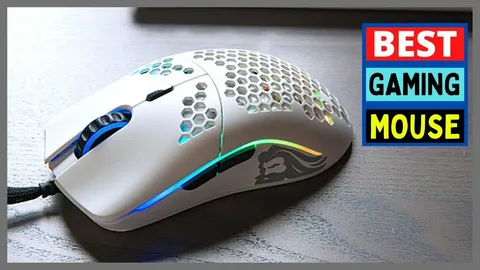Choosing the right mouse can significantly improve your computing experience, whether for work, gaming, or general use. If you prefer a device that offers comfort and ease of movement, a lightweight mouse is often the best choice. This Lightweight Mouse Buying Guide: What to Look for will help you understand the key features and considerations to make an informed purchase.
Why Choose a Lightweight Mouse?
A lightweight mouse is designed to reduce hand fatigue during extended use. This is especially beneficial for gamers, graphic designers, and anyone who spends long hours working on a computer. The lighter the mouse, the easier it is to move quickly and accurately, enhancing your precision and comfort.
Key Features to Consider in This Lightweight Mouse Buying Guide: What to Look for
1. Weight and Build Material
The primary factor in selecting a lightweight mouse is its weight. Typically, lightweight mice weigh between 60 to 80 grams. Manufacturers achieve this by using lightweight materials like plastic with honeycomb designs or minimalistic shells. When looking for the perfect mouse, check the specifications for weight and build quality.
2. Ergonomics and Comfort
Even if a mouse is lightweight, it should also fit comfortably in your hand. Ergonomics play a crucial role in preventing strain or injury. Look for a shape that suits your grip style—palm, claw, or fingertip. A lightweight mouse with poor ergonomics will defeat the purpose by causing discomfort.
3. Sensor and DPI Settings
For precision and performance, especially in gaming or design, the sensor quality is critical. This guide emphasizes checking for a high-quality optical or laser sensor and adjustable DPI (dots per inch) settings. A lightweight mouse with a good sensor can improve your accuracy and responsiveness.
4. Wired vs. Wireless
Both wired and wireless lightweight mice have their advantages. Wireless mice offer more freedom of movement, but some models may add extra weight due to batteries. This Lightweight Mouse Buying Guide: What to Look for suggests evaluating battery life and connectivity stability if you prefer wireless.
5. Additional Features
Look for customizable buttons, RGB lighting, and software support if you want extra functionality. However, keep in mind that added features may increase the mouse’s weight. Balance your need for features with the goal of keeping the mouse light.
Conclusion
Finding the perfect lightweight mouse requires balancing weight, comfort, sensor quality, and features. This Lightweight Mouse Buying Guide: What to Look for highlights the essential aspects to keep in mind during your search. By focusing on these key elements, you’ll be able to choose a mouse that not only feels light in your hand but also enhances your overall computing experience.


